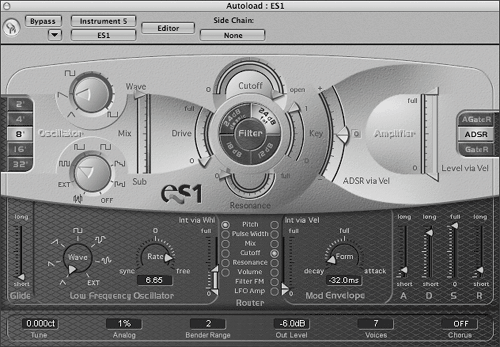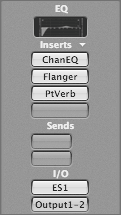Using the ES1 Virtual Analog Synthesizer
| The ES1 was the first software instrument developed exclusively for Logic, kicking off a development surge that led to the multitude of instruments available within Logic Pro today. It was specifically designed to emulate the classic subtractive synthesis of vintage analog synthesizers.
Using Instrument Channel Strip SettingsIn the previous exercise involving the ES1's big brother, the ES2, you added a delay effect to enhance the sound. When these combinations of instruments and effects become more involved, it becomes tedious to reinsert every component in the chain each time you wish to use that sound combination. By using Logic Pro's Channel Strip settings, you can create and recall settings that contain instrument and effects choices within a single preset. Logic Pro installs many Channel Strip settings that fully utilize Logic Pro's effects and instruments to achieve powerful combinations. This is not unlike the technique utilized by hardware synthesizers that combine synthesized sound chained with effects sections to create new and exciting sounds. You can think of instrument Channel Strip settings as a single "patch" that happens to utilize multiple components.
|
EAN: 2147483647
Pages: 166


